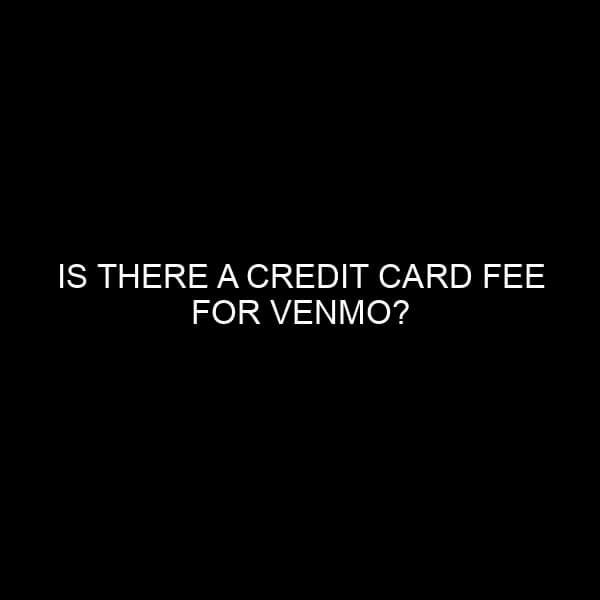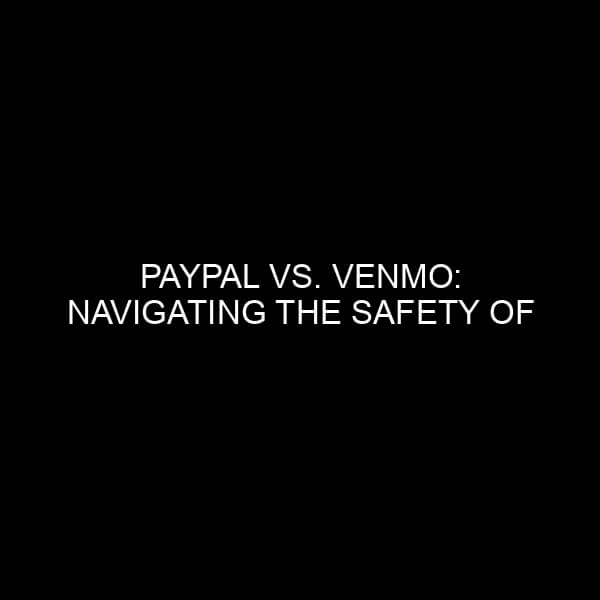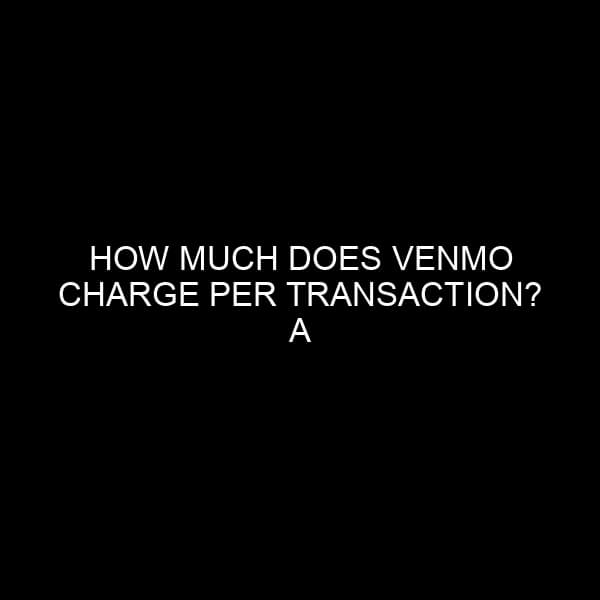Is There a Credit Card Fee for Venmo? Understanding the Cost Implications
In the ever-evolving financial landscape, digital payment platforms such as Venmo have become household names. As users continually seek more convenient, swift, and reliable payment options, questions concerning fees, especially those tied to credit cards, become more frequent. Is there a credit card fee for Venmo? This article provides an in-depth exploration, combining expertise from the financial market and banking industry, to answer this question comprehensively.
Understanding Venmo: A Brief Overview
Before diving into the specifics of credit card fees, it’s crucial to understand Venmo’s operational model. Venmo, owned by PayPal, is a mobile payment service that allows users to send and receive money. It integrates with bank accounts and credit or debit cards. While Venmo’s primary function is peer-to-peer money transfer, it has extended its services to include payments for goods and services, much like traditional banking platforms.
Venmo’s Fee Structure: The Basics
Venmo offers various services, and their fee structure is diverse. For a majority of peer-to-peer transactions, especially those linked to bank accounts or debit cards, Venmo does not charge any fees. However, there’s a different scenario when credit cards come into the picture.
Credit Card Fees on Venmo
When you use a credit card for Venmo transactions, there’s typically a 3% fee involved. This fee is designed to cover the charges that credit card companies impose on Venmo. Unlike debit cards or direct bank transfers, credit card companies levy charges on transactions, which Venmo then passes onto the user.
Here’s a breakdown:
- Sending money: If you’re sending money to a friend or another individual using your credit card, you’ll incur a 3% fee.
- Receiving money: When you’re on the receiving end, there’s no direct fee charged, regardless of the source of the sender’s funds.
- Business payments: Merchants or businesses using Venmo to receive payments for goods or services will also be subject to fees, but these are not directly related to the credit card usage of the payer.
Why Does Venmo Charge Credit Card Fees?
Understanding the rationale behind these fees necessitates a deeper look into the credit card industry’s dynamics. Credit card companies charge merchants a fee, often termed the ‘interchange fee,’ every time their card is used. Given that Venmo facilitates these transactions, they are effectively treated as the merchant in this situation.
When debit cards or bank transfers are used, the costs incurred by the platform are significantly lower or non-existent. Thus, they can offer these services for free. Credit card transactions, however, introduce additional costs for Venmo, leading them to charge the 3% fee to compensate.
Comparing Venmo’s Credit Card Fee with Other Platforms
Venmo isn’t the only platform with associated credit card fees. Other digital payment platforms, including its parent company, PayPal, as well as competitors like Cash App or Zelle, also have their respective fee structures. Most of these platforms similarly charge for credit card transactions due to the same interchange fees imposed by credit card companies.
Tips for Avoiding Venmo’s Credit Card Fees
For users looking to bypass these credit card fees, here are a few tips:
- Use a linked bank account or debit card: Since these methods typically don’t involve fees, they’re the most economical way to use Venmo.
- Regularly review your linked payment methods: Ensure that your default payment method isn’t set to your credit card to avoid unintentional charges.
- Stay updated: Digital payment platforms occasionally adjust their fee structures. Regularly check Venmo’s terms or announcements to remain informed.
Final Thoughts
Venmo offers a blend of convenience and innovation in the digital payments landscape. While its credit card fee may seem off-putting to some, understanding the reason behind it — essentially the costs imposed by credit card companies — provides a clearer picture. With the insights from the financial and banking sector, it becomes evident that these fees aren’t arbitrary, but rather a response to broader industry dynamics.
In navigating the digital finance landscape, it’s crucial to stay informed and choose the payment methods that align best with one’s financial priorities. Whether you’re a frequent Venmo user or just beginning your journey, being aware of such fees can ensure a smoother and more economical experience.






